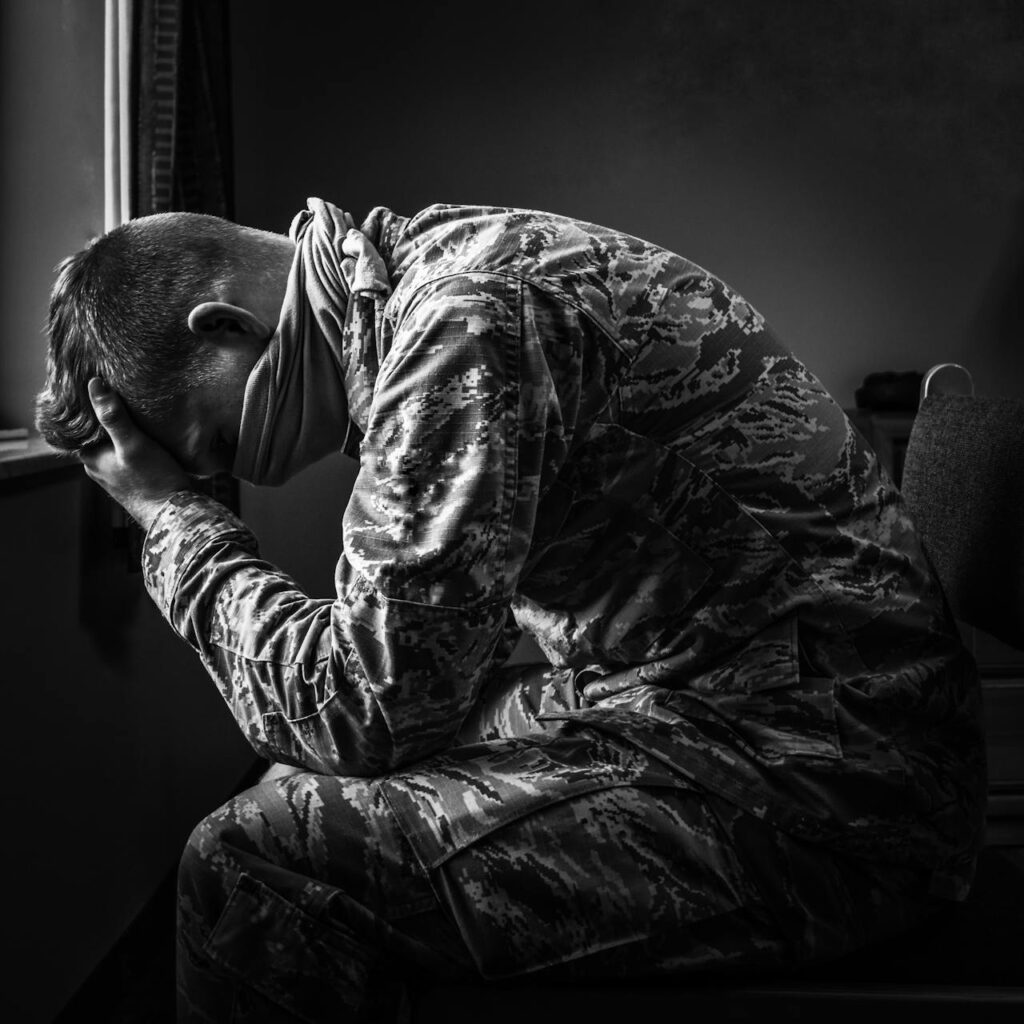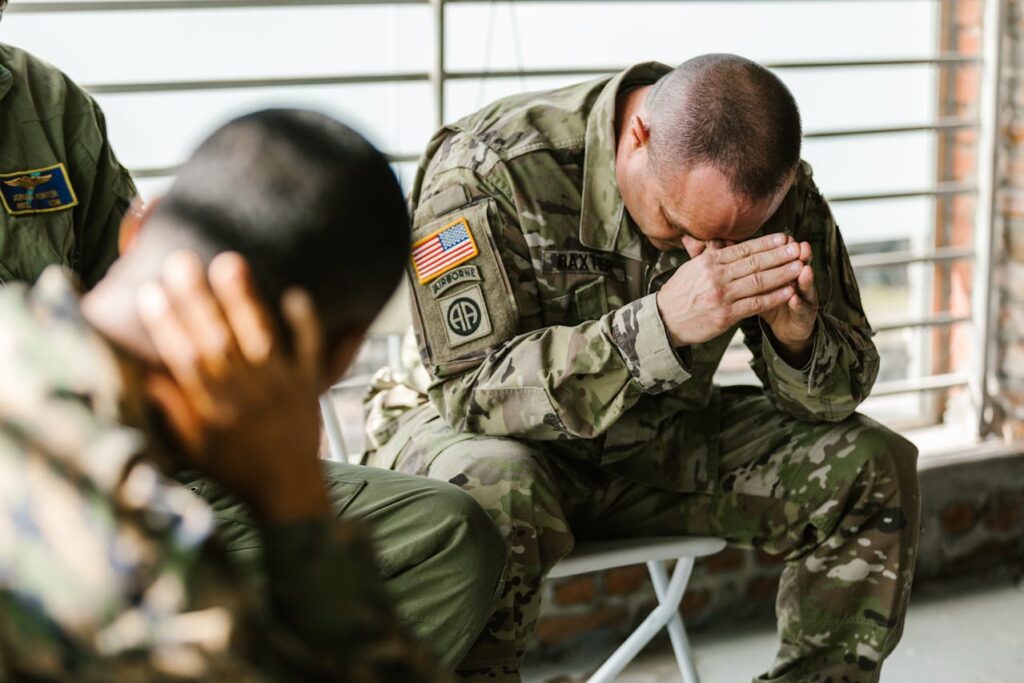How Veteran PTSD and Substance Abuse Are Connected—and What Helps

PTSD doesn’t have to define your future. For veterans facing addiction, the path to healing is possible with the right care, the right people, and the right plan. We see this every day at our Sun Valley Rehab, where recovery isn’t about punishment—it’s about rebuilding trust in yourself and others. The relationship between veteran PTSD and substance abuse runs deep, but so does the potential for recovery. This post explains the science, the struggles, and the solutions. If you or someone you love is living with PTSD and substance abuse in veterans, you’ll find real information here—not vague promises. Let’s unpack why these conditions so often go hand in hand, and what evidence-based options can actually help.
How Are Veteran PTSD and Substance Abuse Linked on a Deeper Level?
The relationship between PTSD and substance abuse in veterans is biological, emotional, and behavioral. These conditions often develop together because of how trauma changes the brain and how substances temporarily soothe that pain. When we look at veterans with PTSD and substance abuse, the overlap is clear.

Multiple systems in the body and mind are affected, from stress hormones to memory, mood, and coping skills. This section breaks down the specific ways these disorders feed into each other—and why treatment has to recognize both to be effective.
What Biological Links Connect PTSD and Substance Use in Veterans?
Brains under stress change over time, especially when trauma goes unprocessed. Researchers have shown that veterans with PTSD and substance abuse share several biological risk factors that make both disorders more likely to occur together. Group therapy for addiction treatment often helps uncover the role these biological shifts play in how veterans respond to fear, stress, and emotional triggers. Chronic stress dysregulates the HPA axis, the body’s hormonal stress response system. This can affect sleep, mood, and reactivity.
At the same time, neurotransmitter imbalances involving dopamine, serotonin, and norepinephrine can make someone more vulnerable to both trauma flashbacks and addictive behaviors. Brain imaging also shows differences in areas like the amygdala and hippocampus, which are involved in fear learning and emotional memory. These shared changes in brain chemistry and structure don’t mean veterans are destined to suffer—but they do explain why veteran PTSD and substance abuse often form a vicious cycle.
Why Do So Many Veterans Use Substances to Cope with PTSD?
What happens when your brain can’t turn off the alarm bell? Many veterans with PTSD and substance abuse problems describe this exact feeling—constant hypervigilance, racing thoughts, intrusive memories. Individual therapy for addiction treatment reveals how easily drugs or alcohol can seem like the only relief. The self-medication hypothesis explains this clearly. Alcohol may seem to help someone sleep or quiet anxiety. Opioids might dull emotional pain or numb memories.
But the relief is short-lived. Over time, tolerance builds, dependence grows, and the original trauma remains unresolved. Worse, substance use can make PTSD symptoms worse by increasing emotional reactivity, impairing memory processing, and fueling shame. Veterans addiction and PTSD often go untreated because the substance use masks the underlying trauma—until it doesn’t anymore.

How Does Using More Than One Substance Complicate Recovery?
Many veterans with PTSD and substance abuse don’t stick to one substance. They rotate between alcohol, marijuana, stimulants, or prescription drugs depending on symptoms, stressors, or availability. Residential treatment Los Angeles clinicians have seen that this pattern—called poly-substance use disorder—creates a more tangled set of symptoms. Recovery becomes harder to navigate when a veteran is managing sleep issues, pain, depression, and trauma all at once using multiple chemicals.
While quitting one substance may lead to quick improvements in some areas, PTSD symptoms often linger, or even worsen. Veterans trauma and substance abuse often reinforce each other this way, especially when detox is rushed or trauma remains unaddressed. When treating PTSD and substance use together, providers must understand the unique roles each substance plays in a veteran’s coping system—and dismantle those patterns carefully.
Does PTSD Increase the Risk of Substance Abuse, or Vice Versa?
The connection runs both ways. Veterans with PTSD and substance abuse are far more likely to develop substance dependence than their peers without PTSD, but early substance use also raises the risk of trauma exposure and poor recovery. Outpatient rehab San Fernando Valley providers frequently assess for both, because treating one without the other often leads to relapse. Substance abuse can impair fear extinction—the brain’s ability to learn that a threat is over.
So even long after a trauma, the brain stays stuck in fight-or-flight mode. Meanwhile, substance use can worsen dissociation, anxiety, and impulsivity, making veterans more prone to risky behaviors or retraumatization. The overlap is not just behavioral—it’s deeply neurological. PTSD and substance abuse in veterans must be viewed as interlocked, not separate conditions.
Why Do Co-Occurring Disorders Lead to Worse Outcomes?
When PTSD and substance use disorder occur together, outcomes often decline across the board. Veterans with PTSD and substance abuse are more likely to experience unemployment, homelessness, legal issues, and worsening mental health. Family therapy in addiction treatment reveals how these combined issues strain relationships, isolate veterans, and leave loved ones feeling helpless.

Treatment becomes more complicated when the patient can’t focus due to withdrawal, or when trauma memories are too overwhelming to address. Dropout rates rise. Hospitalizations are more frequent. Veterans addiction and PTSD require coordinated care because the risk of slipping through the cracks is too high. That means trauma-informed teams, dual-diagnosis programs, and personalized treatment plans that address both wounds—the visible and the invisible.
What Emotional and Cognitive Patterns Keep the Cycle Going?
It’s not just what happened in the past—it’s how the brain learned to process it. Research shows that veterans with PTSD and substance abuse often struggle with intense negative emotions, black-and-white thinking, and high impulsivity. These patterns make it harder to manage triggers or tolerate discomfort. Does Blue Cross Blue Shield cover rehab is a question many veterans and families ask when looking for treatment that actually addresses these deeper cognitive issues.
Left untreated, a cycle forms: painful emotions trigger cravings, substances numb them temporarily, guilt and shame return, and trauma feels even more unbearable. Coping mechanisms for veterans with PTSD and substance abuse have to target these emotional loops. Techniques like cognitive restructuring, distress tolerance, and mindfulness aren’t quick fixes, but they retrain the brain to respond instead of react.
What Stops Veterans from Starting Trauma Therapy If They Use Substances?
Some veterans never hear that they can do trauma therapy and substance treatment at the same time. Others are told they must be sober first. This outdated thinking still exists in some systems. But studies now show that veterans with PTSD and substance abuse can benefit from trauma-focused therapies even during early recovery. Aetna insurance coverage for rehab often includes programs that integrate both treatment tracks from day one.
Barriers include fear of getting worse, mistrust of providers, or guilt about past behavior. But when PTSD remains untreated, relapse is more likely. Veterans substance abuse and PTSD should be addressed together, using trauma-informed care that feels safe, not punishing. Clinicians now understand that delaying trauma therapy only delays healing.

What Actually Works for Veterans Facing PTSD and Substance Abuse?
Treatment has to go beyond surface-level fixes. Veterans dealing with PTSD and substance abuse need care that addresses both conditions at once—not in isolation. Clinical research now backs several approaches that focus on integrated care, combining trauma therapy with substance use support. These interventions aren’t just theory—they’re working in real programs across the country.
In this section, we’ll walk through the evidence-based strategies that show the most promise, from combined therapy models to trauma-focused techniques and medications that support long-term recovery.
Why Is Integrated Treatment the Gold Standard Now?
The best results come from treating PTSD and substance use at the same time, not in sequence. Different programs and other integrated models do exactly this. They blend relapse prevention with trauma-focused therapy so that one doesn’t derail the other. Support groups for veterans with PTSD and substance abuse are often part of these programs, helping participants feel seen and supported.
Integrated care helps veterans build skills to handle triggers without substances while also confronting the root trauma in a safe environment. This dual focus helps reduce dropout rates and improves long-term outcomes. Treatment options for veterans with PTSD and substance abuse must be layered, strategic, and trauma-aware—not one-size-fits-all.

Which Therapies Work Best for PTSD and Substance Use?
Three therapies consistently stand out when it comes to veteran ptsd and substance abuse: Prolonged Exposure (PE), Cognitive Processing Therapy (CPT), and EMDR. Each helps veterans reprocess traumatic memories and regain control over how they think and feel. Therapy for veterans with PTSD and substance abuse often includes these methods alongside skill-building and psychoeducation. EMDR, for instance, uses guided eye movements to help reduce the emotional weight of trauma memories.
PE encourages safe exposure to trauma cues until they lose their power. CPT helps veterans challenge beliefs like “I’m broken” or “I deserved it.” All three can reduce symptoms and lower relapse risk when paired with substance use treatment. These therapies require trust, time, and consistency—but they work.
What Other Therapies Can Support Recovery in Veterans?
Alongside PE, CPT, and EMDR, several other approaches have shown promise when tailored for veterans with PTSD and substance abuse. These methods can be used in combination with core trauma therapies or as stepping stones toward them, depending on individual needs and readiness.
Additional therapies and supportive methods include:
- Acceptance and Commitment Therapy (ACT): Focuses on accepting difficult thoughts and feelings while building a values-based life, even in the presence of trauma.
- Mindfulness-Based Relapse Prevention (MBRP): Teaches veterans how to manage cravings and emotional distress through present-moment awareness and self-regulation skills.
- Narrative Exposure Therapy (NET): Helps individuals organize and process traumatic experiences by constructing a structured life narrative, which aids memory integration and emotional processing.
- Motivational Interviewing (MI): Builds internal motivation and commitment to change through non-confrontational dialogue, especially helpful in early recovery stages.
- Contingency Management: A behavioral method that reinforces sobriety or treatment engagement through structured reward systems—often used in outpatient settings.
Are Medications Useful in Treatment for Veterans?
Some medications help veterans manage cravings or reduce trauma symptoms so therapy can be more effective. Medications for veterans with PTSD and substance abuse might include disulfiram or naltrexone for alcohol dependence, or prazosin for nightmares. Others like topiramate, memantine, or NAC (N-acetylcysteine) are being explored for dual benefits.

Rehabilitation programs for veterans with PTSD and substance abuse often use medication-assisted treatment as part of a larger plan, not a replacement for therapy. The goal isn’t to medicate away the pain—it’s to stabilize the system so the veteran can heal. No pill solves PTSD. But when prescribed carefully, medications can make it easier to stay in treatment, sleep through the night, or resist cravings during therapy.
Why Healing From Veteran PTSD and Substance Abuse Is Still Within Reach
Veterans deserve treatment that recognizes the full picture—not just the symptoms, but the story behind them. The link between veteran PTSD and substance abuse is strong, but so is the evidence for recovery. With integrated therapy, medication support, family involvement, and trauma-informed care, healing becomes possible. Veterans who feel stuck in cycles of fear and addiction are not broken—they’re overwhelmed by systems built to survive war, not peace. If you’re searching for support for yourself or someone you love, know that help exists. Trauma doesn’t get the final word. Choose a program that sees you, not your diagnosis, and commit to the work. Or contact us to help you. One step at a time, it gets better.
You Have Questions
We Have Answers
At Tranquility Recovery Center, we offer treatment for a wide range of addictions, including alcohol, opioids, prescription drugs, and illicit substances. Our team tailors each program to meet individual needs, focusing on both the physical and emotional aspects of recovery.
At Tranquility Recovery Center, we offer treatment for a wide range of addictions, including alcohol, opioids, prescription drugs, and illicit substances. Our team tailors each program to meet individual needs, focusing on both the physical and emotional aspects of recovery.
At Tranquility Recovery Center, we offer treatment for a wide range of addictions, including alcohol, opioids, prescription drugs, and illicit substances. Our team tailors each program to meet individual needs, focusing on both the physical and emotional aspects of recovery.